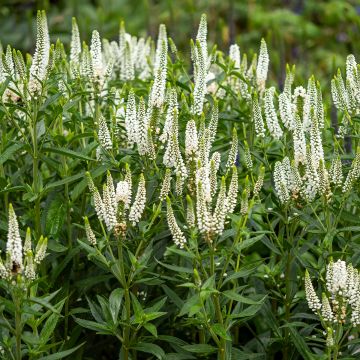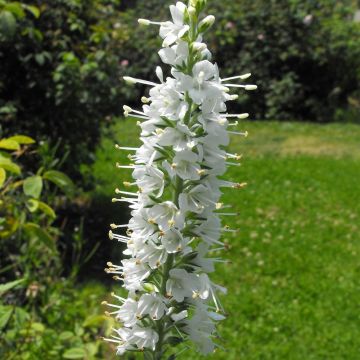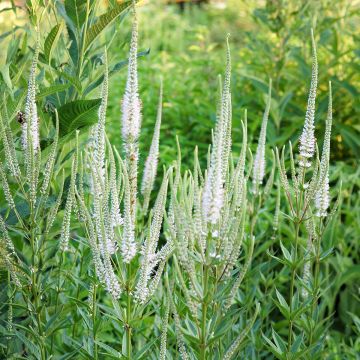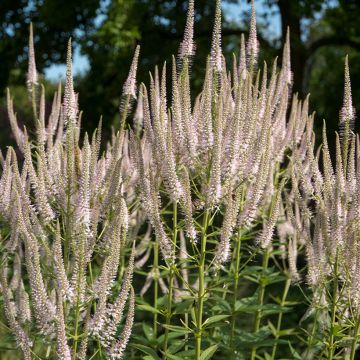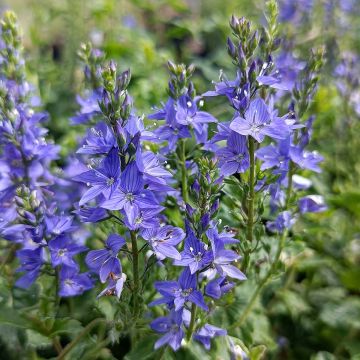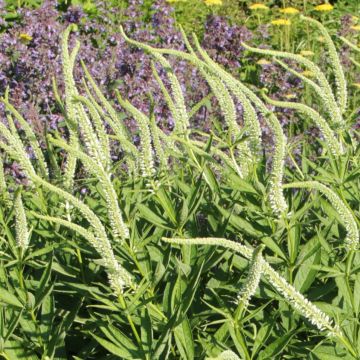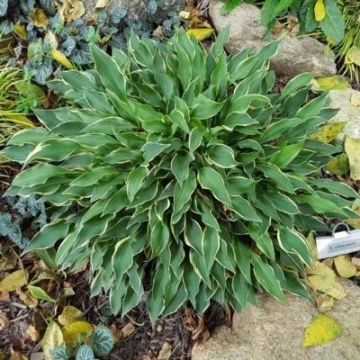Shipping country and language
Your country of residence may be:
Your country of residence is:
For a better user experience on our website, you can select:
Your shipping country:
Andorra
Austria
Belgium
Bulgaria
Canada
Chile
Croatia
Cyprus
Czechia
Denmark
Estonia
Finland
France
Germany
Greece
Hungary
Iceland
Ireland
Italy
Latvia
Lithuania
Luxembourg
Malta
Monaco
Netherlands
Poland
Portugal
Romania
Slovakia
Slovenia
Spain
Sweden
Switzerland
United Kingdom
We only deliver seed and bulb products to your country. If you add other products to your basket, they cannot be shipped.
Language:
French
German
Spanish
English
My Account
Hello
My wish lists
Plantfit
Log in / Register
Existing customer?
New customer?
Create an account to track your orders, access our customer service and, if you wish, make the most of our upcoming offers.
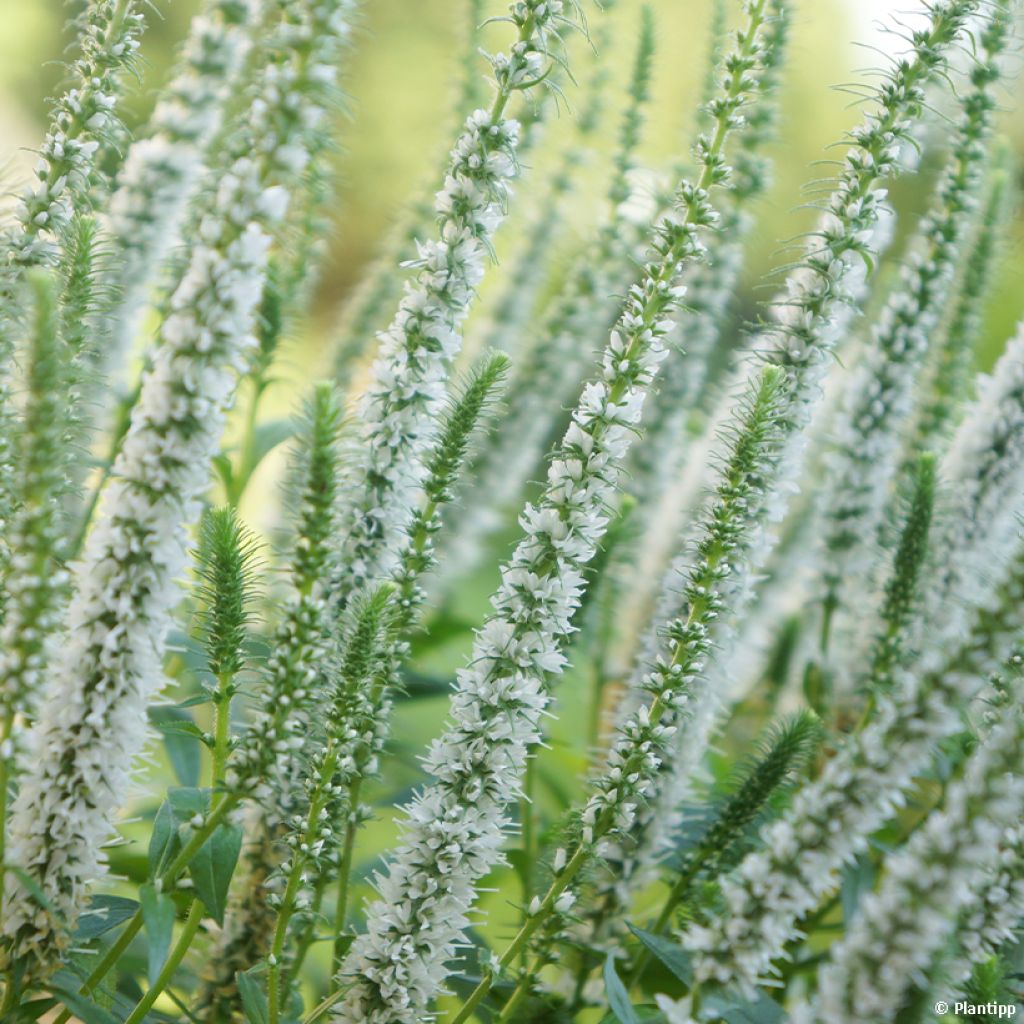

Veronica spicata Snow Candles
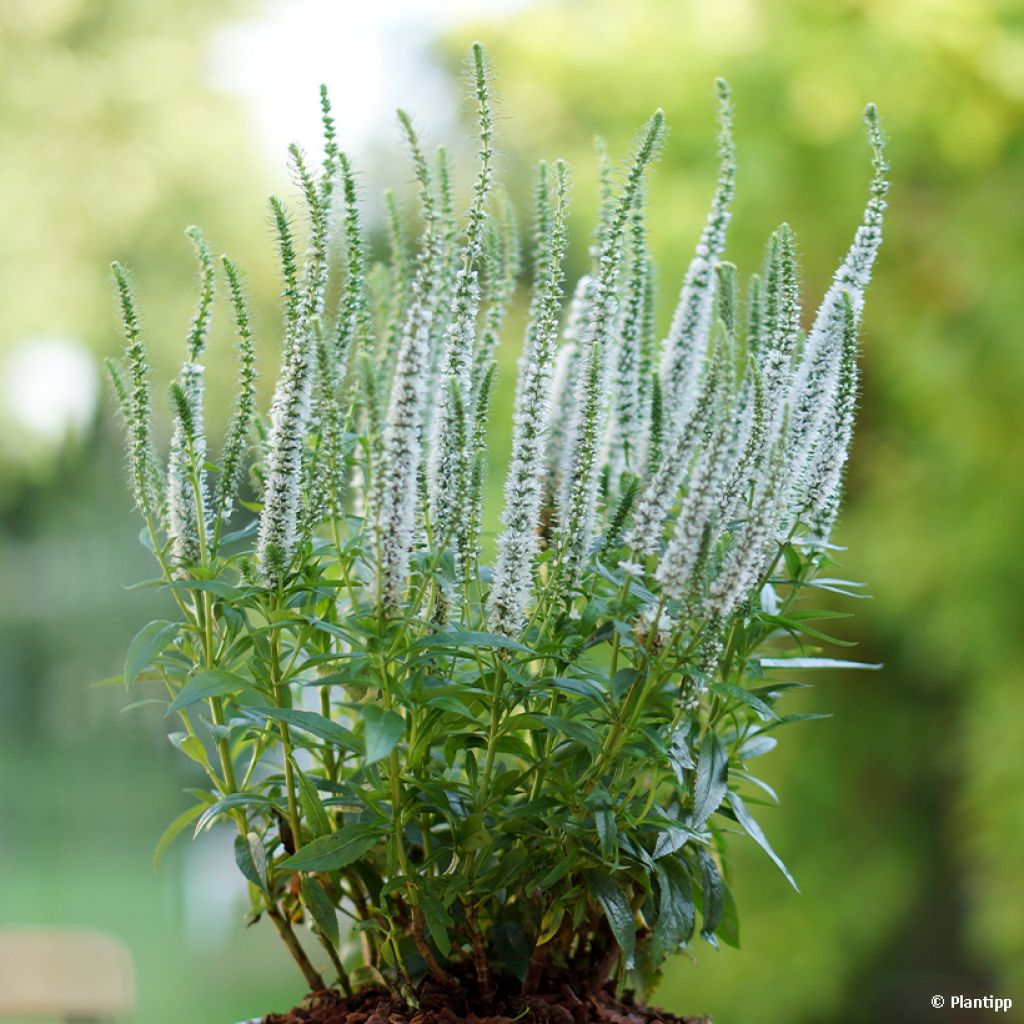

Veronica spicata Snow Candles


Veronica spicata Snow Candles
Veronica spicata Snow Candles
Veronica spicata Snow Candles 'Joca 128'
Spiked Speedwell
Why not try an alternative variety in stock?
View all →Order in the next for dispatch today!
Dispatch by letter from €3.90.
Delivery charge from €5.90 Oversize package delivery charge from €6.90.
More information
This item is not available in your country.
Schedule delivery date,
and select date in basket
This plant carries a 12 months recovery warranty
More information
We guarantee the quality of our plants for a full growing cycle, and will replace at our expense any plant that fails to recover under normal climatic and planting conditions.
From €5.90 for pickup delivery and €6.90 for home delivery
Express home delivery from €8.90.
Does this plant fit my garden?
Set up your Plantfit profile →
Description
Veronica spicata Snow Candles, also known as Spike Speedwell, is a vigorous perennial with a long charming and elegant summer flowering. It produces long architectural, upright spikes covered with small white star-shaped flowers. It forms a compact, creeping clump of dark green foliage. It thrives in sunny flower beds, slopes, and rockeries, in well-drained, dry or occasionally flooded limestone soil.
Spike Speedwell is a perennial plant of the Plantaginaceae family, formerly classified in the Scrophulariaceae family, mainly growing in mountains, up to 2000 m (6562ft) altitude and less commonly in plains. It can be found growing in meadows, on rocky slopes and at the edge of forests, mostly on limestone soil. Snow Candles 'Joca 128' has dense and vigorous vegetation, 30 to 45 cm (12 to 18in) high for the foliage, 60 cm (24in) for the flowers, spreading over 30-40 m (98-131ft) in diameter from its powerful semi-woody crown. Its hairy stems are branched at the upper part and bear deciduous to semi-evergreen, ovate to linear, beautiful dark green leaves, with finely toothed edges. From July to August and sometimes until September, it produces tiny star-shaped flowers, tightly packed on dense upright spikes at the end of the floral stems and attractive to bees and butterflies. The plant self-seeds in light soil.
Veronica spicata Snow Candles can be planted in any well-drained soil, even rocky and limestone, preferably in full sun. It is particularly suitable for a mountain garden with rocky soil. Although it prefers some moisture at its base, it tolerates drought quite well once established. This perennial is useful for planting at the base of shrub roses, in raised flower beds, on a slope or in a rockery, with Echinaceas, Stipas, Red Shrubby Salvias, California Poppies or Lavenders. Its relatively flexible, white spikes provide height and colour to a low flower bed composed of creeping plants like Aubrietas, Wall Bellflowers, or Snow-in-Summer. Spike Speedwell can also be planted en masse. Its flowers are also very beautiful when cut.
Veronica spicata Snow Candles in pictures


Flowering
Foliage
Plant habit
Botanical data
Veronica
spicata
Snow Candles 'Joca 128'
Plantaginaceae
Spiked Speedwell
Cultivar or hybrid
Other Veronica - Speedwell
Planting and care
Veronica Snow Candles is a sun-loving plant that thrives in poor soils. Its preferred habitat is limestone, dry and rocky or gravelly, well-drained soil. It is more sensitive to stagnant moisture in winter than to cold temperatures. You can cut back any unattractive, brown faded stems to promote more flowers. You can allow some plants to self-seed, but the resulting plants may not be identical to the parent. In either case, the clumps should be cut back in spring before the start of new growth.
Planting period
Intended location
Care
This item has not been reviewed yet - be the first to leave a review about it.
Summer flowering perennials
Haven't found what you were looking for?
Hardiness is the lowest winter temperature a plant can endure without suffering serious damage or even dying. However, hardiness is affected by location (a sheltered area, such as a patio), protection (winter cover) and soil type (hardiness is improved by well-drained soil).

Photo Sharing Terms & Conditions
In order to encourage gardeners to interact and share their experiences, Promesse de fleurs offers various media enabling content to be uploaded onto its Site - in particular via the ‘Photo sharing’ module.
The User agrees to refrain from:
- Posting any content that is illegal, prejudicial, insulting, racist, inciteful to hatred, revisionist, contrary to public decency, that infringes on privacy or on the privacy rights of third parties, in particular the publicity rights of persons and goods, intellectual property rights, or the right to privacy.
- Submitting content on behalf of a third party;
- Impersonate the identity of a third party and/or publish any personal information about a third party;
In general, the User undertakes to refrain from any unethical behaviour.
All Content (in particular text, comments, files, images, photos, videos, creative works, etc.), which may be subject to property or intellectual property rights, image or other private rights, shall remain the property of the User, subject to the limited rights granted by the terms of the licence granted by Promesse de fleurs as stated below. Users are at liberty to publish or not to publish such Content on the Site, notably via the ‘Photo Sharing’ facility, and accept that this Content shall be made public and freely accessible, notably on the Internet.
Users further acknowledge, undertake to have ,and guarantee that they hold all necessary rights and permissions to publish such material on the Site, in particular with regard to the legislation in force pertaining to any privacy, property, intellectual property, image, or contractual rights, or rights of any other nature. By publishing such Content on the Site, Users acknowledge accepting full liability as publishers of the Content within the meaning of the law, and grant Promesse de fleurs, free of charge, an inclusive, worldwide licence for the said Content for the entire duration of its publication, including all reproduction, representation, up/downloading, displaying, performing, transmission, and storage rights.
Users also grant permission for their name to be linked to the Content and accept that this link may not always be made available.
By engaging in posting material, Users consent to their Content becoming automatically accessible on the Internet, in particular on other sites and/or blogs and/or web pages of the Promesse de fleurs site, including in particular social pages and the Promesse de fleurs catalogue.
Users may secure the removal of entrusted content free of charge by issuing a simple request via our contact form.
The flowering period indicated on our website applies to countries and regions located in USDA zone 8 (France, the United Kingdom, Ireland, the Netherlands, etc.)
It will vary according to where you live:
- In zones 9 to 10 (Italy, Spain, Greece, etc.), flowering will occur about 2 to 4 weeks earlier.
- In zones 6 to 7 (Germany, Poland, Slovenia, and lower mountainous regions), flowering will be delayed by 2 to 3 weeks.
- In zone 5 (Central Europe, Scandinavia), blooming will be delayed by 3 to 5 weeks.
In temperate climates, pruning of spring-flowering shrubs (forsythia, spireas, etc.) should be done just after flowering.
Pruning of summer-flowering shrubs (Indian Lilac, Perovskia, etc.) can be done in winter or spring.
In cold regions as well as with frost-sensitive plants, avoid pruning too early when severe frosts may still occur.
The planting period indicated on our website applies to countries and regions located in USDA zone 8 (France, United Kingdom, Ireland, Netherlands).
It will vary according to where you live:
- In Mediterranean zones (Marseille, Madrid, Milan, etc.), autumn and winter are the best planting periods.
- In continental zones (Strasbourg, Munich, Vienna, etc.), delay planting by 2 to 3 weeks in spring and bring it forward by 2 to 4 weeks in autumn.
- In mountainous regions (the Alps, Pyrenees, Carpathians, etc.), it is best to plant in late spring (May-June) or late summer (August-September).
The harvesting period indicated on our website applies to countries and regions in USDA zone 8 (France, England, Ireland, the Netherlands).
In colder areas (Scandinavia, Poland, Austria...) fruit and vegetable harvests are likely to be delayed by 3-4 weeks.
In warmer areas (Italy, Spain, Greece, etc.), harvesting will probably take place earlier, depending on weather conditions.
The sowing periods indicated on our website apply to countries and regions within USDA Zone 8 (France, UK, Ireland, Netherlands).
In colder areas (Scandinavia, Poland, Austria...), delay any outdoor sowing by 3-4 weeks, or sow under glass.
In warmer climes (Italy, Spain, Greece, etc.), bring outdoor sowing forward by a few weeks.
